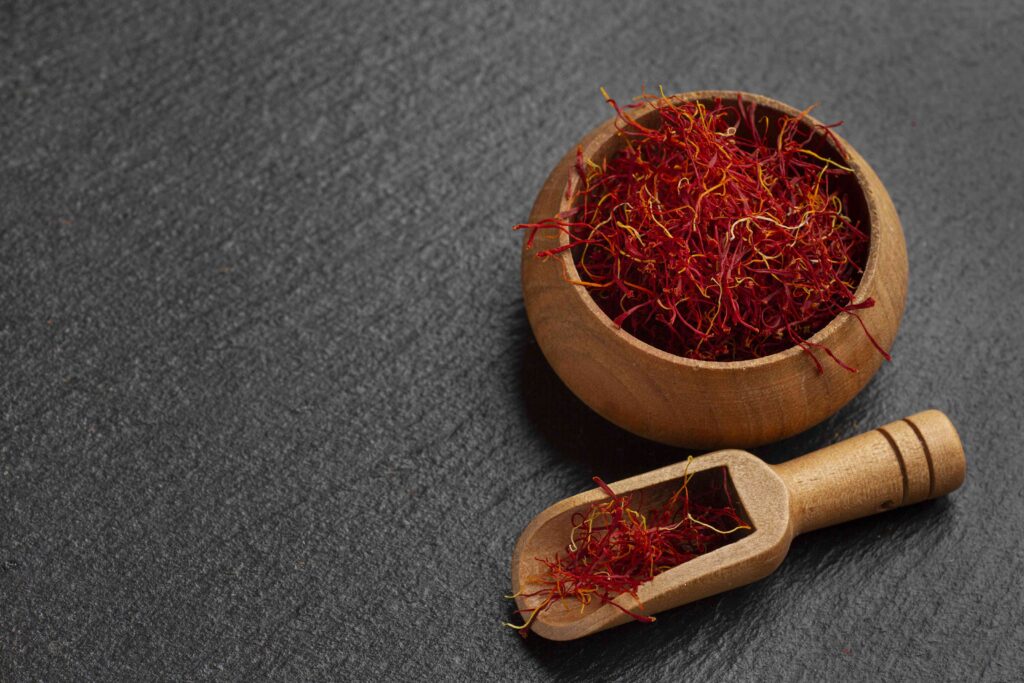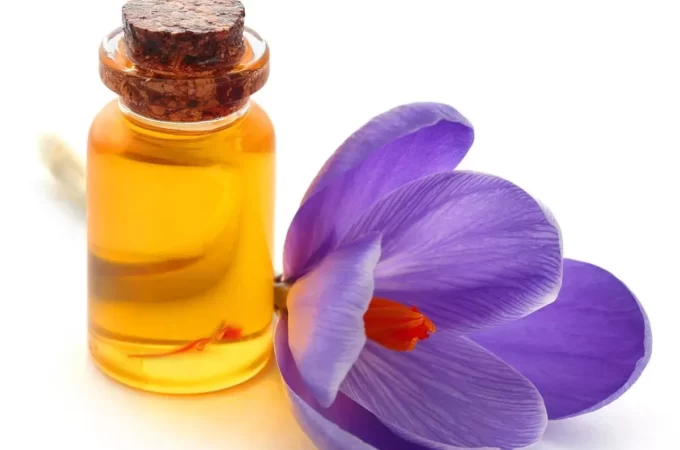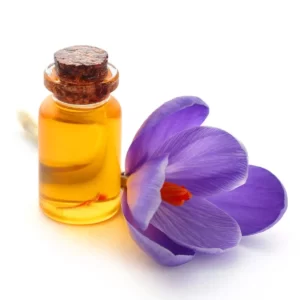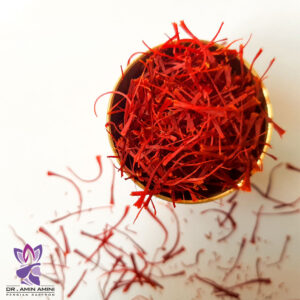Introduction
The saffron used is actually the stigma of the saffron plant. This part has important metabolites such as crocin, crostin, safranal and picrocrocin. Crocin is responsible for the red color, picrocrocin is responsible for the bitter taste, and safranal is responsible for the taste and smell of saffron. Safranal (soluble in fat) and crocin (precursor of crocin) are bitter, but the most important factor of saffron bitterness is picrocrocin.
The main factor in creating color strength in saffron is a yellow compound called crocin with the chemical formula C44H64O24.
Crocins are glycosyl esters of crocetin containing a central unit with seven conjugated double bonds and four methyl groups as side chains.
Crocin is one of the few naturally occurring carotenoids that are readily soluble in water. This solubility is one of the reasons for its wide use as a colorant in food and medicine compared to other carotenoids.
The color strength of saffron is one of the main parameters that determine the quality of saffron, which is evaluated by measuring the amount of crocin in it.
As mentioned, saffron has medicinal properties and is also known as a medicinal plant. Crocin is the most important medicinal agent of this plant.
Researchers have scientifically investigated the effect of crocin on various diseases, some of which are mentioned below.

Crocin in nervous diseases
During the study of the anti-anxiety effect of crocin compared to diazepam (a drug effective in treating anxiety) in laboratory conditions, it was found that this substance in certain doses, like diazepam, leads to a reduction of anxiety. Finally, it was found that saffron is effective in improving sleep and reducing anxiety; But these effects are dose-dependent.
After several investigations on people suffering from mild depression, it was found that consuming a certain dose of saffron can have a positive effect on improving depression. The mechanism of saffron’s effect to reduce anxiety is probably that crocin and safranal affect dopamine (hormone of euphoria), norepinephrine (hormone of stress), and serotonin (hormone of happiness).
More precisely, crocin is probably effective on the dopaminergic system (dopamine transmission pathways) and inhibition of norepinephrine and safranal reabsorption on the serotonergic system (serotonin transmission pathways).

Crocin and eye diseases
Experiments and studies have shown that saffron can be effective in the treatment of some eye diseases such as AMD. These effects have been attributed to crocin and crostin, which probably prevents apoptosis (programmed cell death) and thus prevents photoreceptor death caused by light. Also, this substance increases retinal blood flow and improves its function.
On the other hand, crostin increases the release of oxygen to liquids such as plasma. Therefore, saffron and its components (especially crocin and crostin) can protect the eye function.
These effects can be related to their antioxidant function, inhibition of apoptosis, and anti-inflammatory function.

Crocin and memory
Japanese researchers have claimed that crocin and crostin improve learning and memory skills.
In general, from the results of studies on the effect of saffron on memory, it seems that saffron and its constituents, especially crocin, strengthen memory and reduce the effects of external damage on memory.
Crocin and antioxidant activity
The most important role of crocin is its antioxidant function. Crocin can affect oxidative stress by increasing the expression of genes involved in antioxidant processes and antioxidant enzymes and neutralizing the effect of a large number of free radicals.
Crocin and crocetin can fight neuroinflammation that is associated with the onset of diseases such as Alzheimer’s and Parkinson’s.
Finally, we can say that the price of this tasty and fragrant plant is not without reason. Today, the effective substances and secondary metabolites of the saffron plant are used in the treatment of many diseases and it has gained its real place as a medicine in modern medicine.





